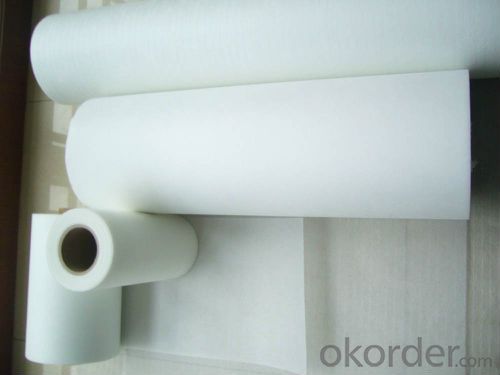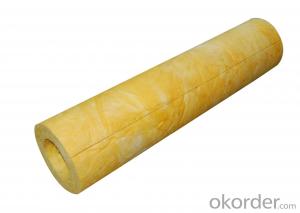E Glass and C Glass Fiber Surface Tissue Mat
- Loading Port:
- Qingdao
- Payment Terms:
- TT or LC
- Min Order Qty:
- 144000 m²
- Supply Capability:
- 1440000M2 Per Month m²/month
OKorder Service Pledge
OKorder Financial Service
You Might Also Like
1.Brief Introductions
Surfacing Tissue mainly used in the surface layers of FRP products. It features even Fiber distribution, soft feel, level and smooth fiber surface, less glue content, quick resin soak and good pattern fitness. It can improve the product surface property on corrosion resistance, compressive strength, seepage resistance, and longer service life. It is also suitable for spraying; pattern pressing and other FRP pattern technology.
2.Product Features
Fast breakdown in styrene
Fiber dispersed evenly
Low binder content
Superior acid corrosion resistance
3.Specifications
Property | Area Weight | Moisture Content | Size Content | Breakage Strength | Width |
(%) | (%) | (%) | (N) | (mm) | |
Mathods | IS03374 | ISO3344 | ISO1887 | ISO3342 | |
S-SM20 | ±7.5 | ≤0.20 | 6-8 | ≥20 | 40-3000 |
S-SM30 | ≥30 | ||||
S-SM50 | ≥40 | ||||
S-HM20 | ≥20 | ||||
S-HM30 | ≥30 | ||||
S-HM50 | ≥40 |
Special specification can be produce according to customer requirements.

4.FAQ
Product packaging
Each Surface Tissue is wound onto a paper tube which has an inside diameter of 76mm and the mat roll has a diameter of 330mm. The mat roll is wrapped up with plastic film,and then packed in a cardboard box or wrapped up with kraft paper. The rolls can be vertically or horizontally placed. For transportation, the rolls can be loaded into a cantainer directly or on pallets.
Product storage:
Unless otherwise specified, Chopped Strand Mat should be stored in a dry, cool and rain-proof area. It is recommended that the room temperature and humidity should be always maintained at 15℃~35℃ and 50%~75% respectively.
- Q:Can fiberglass mat tissue be used for insulating crawl spaces?
- Yes, fiberglass mat tissue can be used for insulating crawl spaces. It is a commonly used material for thermal insulation due to its good insulation properties and moisture resistance. It can help to reduce heat loss and prevent moisture buildup in crawl spaces, making it an effective choice for insulating this area.
- Q:What is the thermal conductivity of fiberglass mat tissue?
- Fiberglass mat tissue typically exhibits a low thermal conductivity, which falls within the range of 0.03 to 0.05 W/m·K. Consequently, it serves as an excellent insulator, effectively impeding the flow of heat. Its favorable insulative properties render it suitable for various applications, including thermal insulation in buildings, industrial equipment, and appliances.
- Q:How does the roll weight of fiberglass mat tissue affect its transportation?
- The roll weight of fiberglass mat tissue directly affects its transportation in terms of the ease and cost. Heavier rolls will require more effort and resources for handling, loading, and unloading. They may also require specialized equipment for transportation, leading to higher shipping costs. On the other hand, lighter rolls are easier to handle and transport, reducing the overall logistical challenges and expenses.
- Q:What is the expected lifespan of fiberglass mat tissue in chemical storage applications?
- The expected lifespan of fiberglass mat tissue in chemical storage applications can vary depending on factors such as the specific chemicals being stored, the conditions of storage (temperature, humidity, etc.), and the quality of the fiberglass material. However, fiberglass mat tissue is generally known for its durability and resistance to corrosion, making it suitable for long-term use in chemical storage applications. With proper maintenance and care, it can typically last for many years.
- Q:Can fiberglass mat tissue be used for repairing fiberglass tanks?
- Yes, fiberglass mat tissue can be used for repairing fiberglass tanks. Fiberglass mat tissue is a thin, flexible material that is commonly used in the construction and repair of fiberglass products. It is designed to provide reinforcement and strength to the repaired areas. When applied with an appropriate resin, fiberglass mat tissue can effectively repair cracks, holes, or damaged sections of fiberglass tanks. However, it is important to ensure that the repair is done in a proper and professional manner, following the manufacturer's instructions and guidelines. Additionally, it is recommended to consult with an expert or specialist in fiberglass repair to ensure the best possible outcome for the repair.
- Q:Can fiberglass mat tissue be used for making insulation panels?
- Yes, fiberglass mat tissue can be used for making insulation panels. It is a commonly used material due to its excellent thermal insulation properties and its ability to resist heat and cold. Additionally, fiberglass mat tissue is lightweight, durable, and can be easily molded into various shapes and sizes, making it suitable for insulation panel production.
- Q:How is fiberglass mat tissue made?
- Fiberglass mat tissue is made through a process called wet-laid process, which involves several steps. First, glass fibers are created by melting and extruding glass through small holes to form continuous filaments. These filaments are then coated with a sizing agent to improve their handling properties and strengthen the final product. Next, the glass fibers are chopped into short lengths to create a fiber mat. This is usually done using a knife or a rotary chopper. The chopped fibers are then collected and formed into a thin layer on a moving conveyor belt. In parallel to this, a binder solution is prepared by mixing a synthetic resin with water. This solution is then sprayed onto the fiber mat to wet and bind the fibers together. The amount of binder used determines the strength and flexibility of the final product. To ensure uniform distribution of the binder and proper consolidation of the mat, it passes through a series of rollers. These rollers apply pressure to remove excess water, squeeze the fibers together, and promote bonding between the fibers. Once the mat is consolidated and the desired thickness is achieved, it is dried in an oven or through hot air currents. This removes any remaining moisture and cures the binder, transforming it into a solid resin. After drying, the fiberglass mat tissue is wound into rolls for storage or further processing. It can be used as a reinforcing material in various industries, such as construction, automotive, and aerospace, due to its excellent strength, corrosion resistance, and thermal insulation properties.
- Q:Can fiberglass mat tissue be used for insulation in power generation facilities?
- Certainly, insulation in power generation facilities can make use of fiberglass mat tissue. This versatile material is frequently employed for insulation due to its exceptional properties in thermal and electrical insulation. With resistance to high temperatures, it effectively captures and hinders heat transfer, thus making it highly suitable for power generation facilities where heat management is vital. Moreover, fiberglass mat tissue is lightweight, easily installed, and provides durability and longevity, rendering it a cost-effective option for insulation in such facilities.
- Q:What is the density of fiberglass mat tissue?
- The density of fiberglass mat tissue can vary depending on the specific type and manufacturer. However, on average, fiberglass mat tissue has a density of around 1.5 grams per cubic centimeter (g/cm³) or 1500 kilograms per cubic meter (kg/m³). It is important to note that the density may slightly differ based on the thickness and composition of the fiberglass mat tissue.
- Q:How does fiberglass mat tissue perform in terms of moisture vapor resistance?
- Fiberglass mat tissue generally performs well in terms of moisture vapor resistance. The material itself is not permeable to moisture, meaning it acts as a barrier to prevent the passage of water vapor. This characteristic makes fiberglass mat tissue suitable for applications where moisture control is important, such as in roofing or insulation. The moisture vapor resistance of fiberglass mat tissue can be further enhanced by using it in conjunction with other materials, such as vapor barriers or moisture-resistant coatings. These additional layers can provide an extra level of protection against moisture infiltration, improving the overall performance of the fiberglass mat tissue in terms of moisture vapor resistance. However, it is important to note that the specific moisture vapor resistance of fiberglass mat tissue can vary depending on its thickness, density, and composition. Thicker and denser fiberglass mats generally offer higher moisture vapor resistance compared to thinner and less dense ones. Additionally, the presence of any manufacturing additives or coatings can also affect the material's moisture vapor resistance properties. In summary, fiberglass mat tissue is known for its good moisture vapor resistance capabilities, but its exact performance in this regard can be influenced by various factors. It is advisable to consult product specifications or manufacturers' recommendations to determine the specific moisture vapor resistance of a particular fiberglass mat tissue product.
1. Manufacturer Overview |
|
|---|---|
| Location | |
| Year Established | |
| Annual Output Value | |
| Main Markets | |
| Company Certifications | |
2. Manufacturer Certificates |
|
|---|---|
| a) Certification Name | |
| Range | |
| Reference | |
| Validity Period | |
3. Manufacturer Capability |
|
|---|---|
| a)Trade Capacity | |
| Nearest Port | |
| Export Percentage | |
| No.of Employees in Trade Department | |
| Language Spoken: | |
| b)Factory Information | |
| Factory Size: | |
| No. of Production Lines | |
| Contract Manufacturing | |
| Product Price Range | |
Send your message to us
E Glass and C Glass Fiber Surface Tissue Mat
- Loading Port:
- Qingdao
- Payment Terms:
- TT or LC
- Min Order Qty:
- 144000 m²
- Supply Capability:
- 1440000M2 Per Month m²/month
OKorder Service Pledge
OKorder Financial Service
Similar products
New products
Hot products
Hot Searches
Related keywords



























